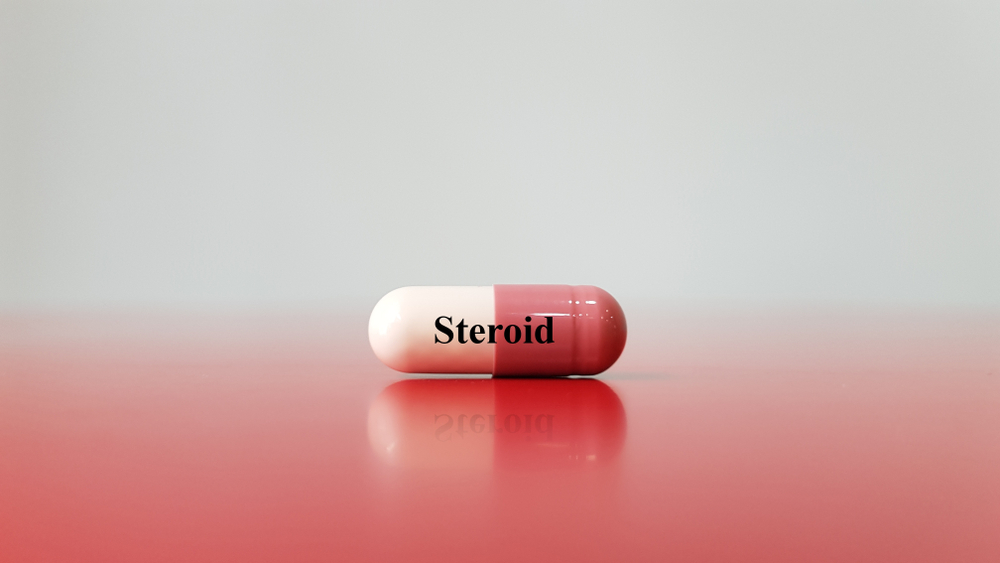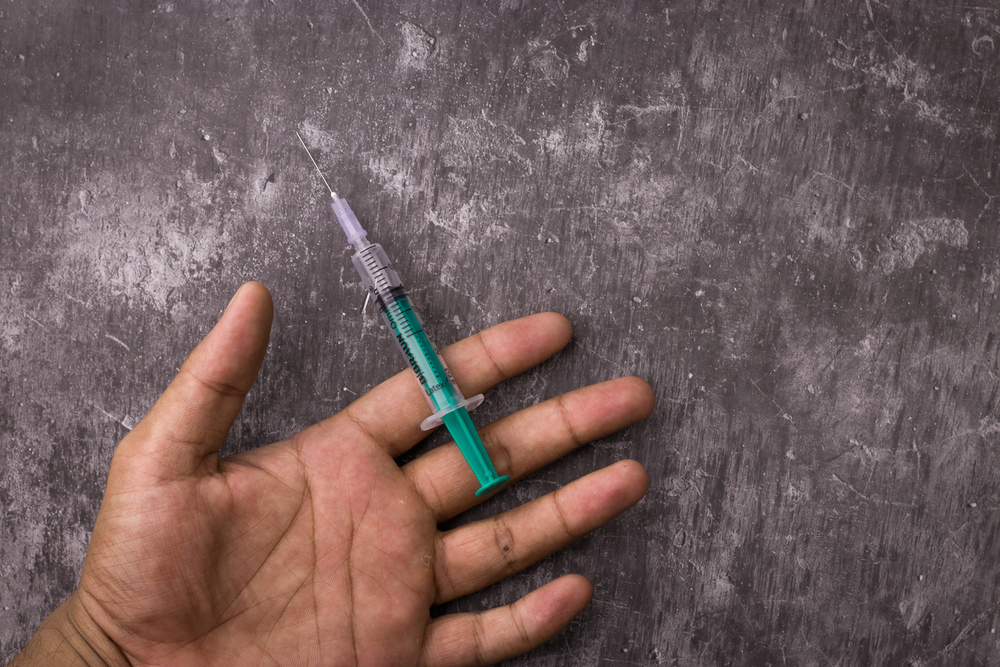Last Updated:
July 21st, 2025
Steroid Detox | Dealing with Steroid Withdrawal
There are nearly a million people in the UK abusing anabolic steroids and putting themselves at risk of addiction. When steroid addiction takes hold, it can cause enormous harm to your health and well-being. The first stage of effective treatment is steroid detox, an often misunderstood process but one that is critical for healing and recovery. Steroid detox may not be as high-profile as that for other substances, but knowing how to detox your body safely is very important for setting solid recovery foundations.

What is steroid detox?
Steroid addiction detox is the process of safely discontinuing the use of anabolic steroids. These are medications which are commonly misused for performance enhancement or bodybuilding purposes. Unlike some substances that can be stopped abruptly, steroids often need to be tapered down gradually to help your body readjust its natural hormone production.
When people attempt to detox from steroids at home, they often quit all at once. This does not allow your body and brain the time they need, so steroid withdrawal symptoms hit. These are not usually as dangerous as withdrawal symptoms for other drugs, but they are often powerful enough to override your determination to quit and cause you to relapse.
A specialised steroid detox centre can help with this problem. They provide dedicated programmes which take you gradually through each stage of steroid withdrawal so you aren’t overcome and are ready to move on to subsequent treatment steps.
What is steroid withdrawal?
Steroid withdrawal is the medical term for the physical, emotional and mental reactions to quitting steroids. They indicate that your brain and body have become so physically dependent on steroids that your systems now rely on them to do their basic jobs. This is a reversible condition, but it takes time, and while your systems are resetting, symptoms of steroid withdrawal can hit you hard. These often include:
- Fatigue
- Experiencing rapid emotional changes
- Depression
- Insomnia
- Restlessness
- Loss of appetite
- Decreased libido: Reduced sexual drive or interest.
- Cravings for steroids
- Headaches
- Muscle and joint pain
- Nausea
- Decreased concentration
How long does steroid withdrawal last?
The duration of steroid withdrawal can vary widely depending on several factors including the length of time the steroids were used, your dosage, the type of steroid and your own body chemistry. Generally, steroid withdrawal symptoms can last from a few weeks to several months.
Short-term symptoms of steroid withdrawal, including mood swings, fatigue, restlessness and reduced appetite, can appear within the first few days after cessation and might last a few weeks.
Longer-term symptoms such as depression and cravings, can persist for several months. This is due to the time it takes for your body to resume natural hormone production and regulate its systems without the presence of external steroids.
Some people may experience ongoing steroid withdrawal symptoms that come and go over a period of months. This is called Post-Acute Withdrawal Syndrome (PAWS). These symptoms are not as intense as the initial withdrawal but can still be significant and disruptive.
What is topical steroid withdrawal?
Topical steroid withdrawal (TSW), also known as Red Skin Syndrome, occurs when you discontinue the use of topical steroids after prolonged application. These steroids are often prescribed for conditions like eczema or psoriasis, and when used over a long period, your skin can become ‘addicted’ to the treatment.
Unlike traditional substance addiction, this is more about the skin becoming reliant on the medication to manage inflammation and other symptoms than any physical or psychological dependency.
The symptoms of TSW include:
- Severe redness
- Burning
- Stinging
- Excessive skin peeling
- The re-emergence of the original skin condition, often in a more aggressive form
The duration of TSW varies, lasting from weeks to several years, largely dependent on the duration and potency of the topical steroid used as well as your individual skin characteristics and healing response.
How to prevent topical steroid withdrawal?
- Use topical steroids only as directed
- Use only for a short time
- Taper off when discontinuing use
- Monitor your skin’s response to treatment
- Discuss changes with your healthcare provider
- Explore alternative treatments if you have a reaction to topical steroids

The benefits of steroid detox at a professional treatment centre
If you’re at a crossroads about where to detox from steroids, medically-guided programmes provide a level of safety and effectiveness far beyond what home detox can offer. Here are some of the main benefits:
Tips for a successful steroid detox
Even with professional support, you still need to take ownership of your own recovery. Here are some practical but easy tips to put into practice during steroid detox:
1. Adhere to your steroid detox plan
It is crucial to follow the tailored plan your steroid detox centre provides. If there is something you are not sure about, speak to your team so they can explain. Medical detox professionals have vast experience, so following their guidance can help make the steroid withdrawal process easier.
2. Stay hydrated
Dehydration is one of detox’s biggest dangers, so ensure you get lots of fluids to flush out all the steroids and support your body’s renewal.
3. Look after yourself
Self-care activities like exercise and meditation can significantly alleviate your stress and anxiety and help you sleep and feel better during steroid detox.
4. Ask for support
Having a robust support system is invaluable during steroid detox. Don’t be shy to lean on family, friends and your detox centre’s medical team to help you through this challenging period.
Contact us today to find the right steroid detox centre
At Addiction Helper, we understand that everyone requires a unique approach to recovery. That is why we offer personalised assistance to help you identify the steroid detox programme for your goals and needs. Reach out to us today and we can help maximise your chances for a successful, lasting recovery.
Our compassionate team are ready and available to take your call, and guide you towards lasting the lasting addiction recovery you deserve.
Frequently Asked Questions
(Click here to see works cited)
- NCBI. “Topical Corticosteroid Addiction and Phobia – PMC.” NCBI, https://www.ncbi.nlm.nih.gov/pmc/articles/PMC4171914/. Accessed 20 February 2025.
- National Institute on Drug Abuse. “Anabolic Steroids and Other Appearance and Performance Enhancing Drugs (APEDs).” National Institute on Drug Abuse, https://nida.nih.gov/research-topics/anabolic-steroids. Accessed 20 February 2025.
- NHS. “Anabolic steroid misuse.” NHS, https://www.nhs.uk/conditions/anabolic-steroid-misuse/. Accessed 20 February 2025.
- Thompson, Tony. “Are one million people in the UK using anabolic steroids? – Full Fact.” Full Fact, 12 August 2022, https://fullfact.org/health/steroids-bodybuilding-image-prevalence/. Accessed 20 February 2025.
- UK-Rehab. “Steroids Addiction | UK Rehab.” UK-Rehab, https://www.uk-rehab.com/stimulant-addiction/steroids/. Accessed 20 February 2025.

